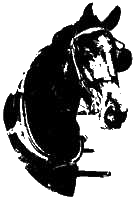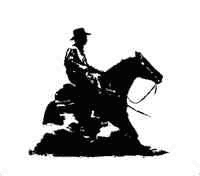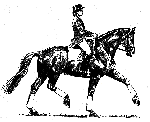Winston Churchill
 Riding Styles
Riding Styles 

 Riding Styles
Riding Styles 

Driving
Western
Dressage
More Riding Styles
Driving
The use of horses for pulling chariots probably preceded their use for riding. In the valleys of the Tigris, Indus and Euphrates, and in Syria and Egypt chariots were used by successive warlike empires in the 2,000 years before the Christian era. These flat, open lands were ideal for wheeled vehicles. Two or four horses, harnessed to a light chariot, provided swift transport for two or three people.
For 1,500 years, chariot racing was the national sport of Ancient Greece. The first Olympic chariot races were included in the twenty-fifth Olympiad in 408B.C.. Chariot racing was a popular spectator sport in the Roman circus. There were the four chariot groups - green, red, blue and white - each supported by a political faction that provided a safety valve for the potentially rebellious populace.
The harness used for horse vehicles was originally based on the ox yoke, which was employed for centuries before the general establishment of wheeled vehicles. Horses were also hitched to a central pole in a similar fashion to oxen.
The Chinese made the most significant improvements in both harness and vehicles. By 1300B.C. they were using sophisticated wheeled vehicles, which they drove on carefully constructed roadways of specific widths. They invented the single horse vehicle, which was drawn by means of lateral shafts, and they were also the first (largely on account of the width of the roadway) to drive horses in tandem - one behind the other.
The chinese also invented the breast harness, indistinguishable from that in use today, in 250B.C.. Then came the breeching strap, which allowed the horse to hold or brake the load. Finally, they developed the neck collar, acclaimed as one of the world's greatest inventions. The collar allowed maximum tractive force to be applied to a load. When it finally reached Europe in the eighth and ninth centuries, the collar ensured the ultimate use of heavy horses in agriculture.
The evolution of driving and coaching in Europe was made possible principally because of improvements that were made by the Hungarians, who to this day, figure prominently in driving sports. The Hungarians produced prototype road coaches in the late fifteenth century. These coaches were built at a village called Kocs in the Komorne, and the word coach derives from it. The Hungarian coach was distinguished by having the front wheels smaller than the rear wheels, thus allowing the fore-carriage to turn on a very full lock. It was a light coach with a much lower center of gravity than that of its predecessors. This increased its stability and allowed it to be driven at greater speeds. The Hungarians also improved suspension. First, they developed a body supported on leather slings, like a hammock. Then, they invented multileaved elliptical springs, which improved performance and passenger comfort. Over time, reliable axle boxes evolved and the quality of the harness improved enormously, being made stronger, lighter and more flexible.
Horse driving trials for singles, pairs and teams are based on the ridden three-day event format with one extra phase: the spit-and-polish section called "Presentation". This is followed by a dressage phase. Competition B is the marathon, which is the equivalent of the speed and endurance test in eventing. A full marathon covers 17 miles and includes numerous obstacles. The final phase is the obstacle driving, a competition which, like eventing's show jumping, tests the fitness of the horses after the exertions of the marathon on the previous day.
Western
The horse was re-introduced to North America in the sixteenth century by the Spanish conquistadores, who also brought their equipment and all their horselore. The Spanish influence survives in the skills of the western horsemen, overlaid by the practical requirements of cattle ranching that was the reality of the western school of horsemanship.
The equipment of the cowboy evolved in order to meet the needs imposed by an empy country, one that was beset with every hardship, and in which a man on foot stood little chance of survival.
The cowboy's broad-brimmed hat, the Stetson, fulfilled a variety of purposes. It served as a protection for the head against the sun, and in winter it could be tied down to cover the ears. It could also be used to scoop up water or waved to shoo a steer during herding.
Levi Strauss, a New York tailor, perfected cowboy trousers. He bought denim and used it to make low-hipped, narrow-legged trousers. Today we know them as jeans.
The cowboy tucked his jeans into soft but very strong, leather boots with high, forward-sloping heels, which he could dig into the ground when holding onto a roped calf. The cowboy was especially particular about his boots, which he might have to wear for days on end, and he usually had them made to measure. His spurs jangled when he rode around the cattle and warned them of his presence.
The rest of his wardrobe consisted of a flannel shirt with a loose vest of cloth or buckskin and a cotton bandana. The bandana served as a bandage, a face mask, and as a filter for drinking water. Some cowboys also wore cuffed leather gloves to protect their hands against the bitter western winters and to protect them when a steer pulled hard against the rope.
Dress varied according to the terrain. In the mesquite country of Texas, which was full of thorny brush, a pair of chaps was essential. These leggings were made of heavy leather with fringed outer seams. In California, where the range was more open, the chaps were made of sheepskin or even fur, and included more ornamentation - silver-plated studs, spurs and so on. There were also differences in the lariat and the way in which they were used. The Texan favored a 30-40ft lariat made of manila rope, while the Californian threw his "big loop" with a 60-65ft, rawhide rope.
Saddles varied widely in design and were often made to measure. They all were derived from the conquistadores' saddle. Additions and refinements were made as necessary or in accordance with individual preference. Basically, the western saddle was a working platform, which afforded optimum comfort during long days on the cattle trails. It was heavy - 30 to 90lbs - and was equipped to carry not only the cowboy but also his gear and, of course, it had a horn to which the lariat could be tied.
Most cowboys used a simple curb bit after the horse had been broken in, the hackamore acting on the nose. Open reins were used and cow ponies were trained to stand when the rider dismounted and dropped the reins.
Many of the horses used in the early days were mustangs or original Spanish stock. They were small but tough, balanced and wiry. Breaking was carried out by bronco-busters and was rough and ready, but the horses had to be able to work with cattle and they acquired skills beyond the comprehension and ability of most European horsemen.
Geldings were preferred to the less-reliable mares. The elite of the remuda (the herd of broken horses kept on a ranch) was the cutting horse, which was able to take a designated beast out of the herd. Good roping horses were also prized. They placed their rider in the best position to throw his lariat with no more than minimal signals. Then they braced themselves against the struggling animal, always keeping the rope taut even when the rider dismounted. These horses worked almost instinctively and were schooled to unbelievably high standards.
The cowboy and his special skills are no longer needed in the modern cattle business, but they still survive in the popular rodeos that run competitions of skill based on events that were once commonplace in the lives of cowboys. Typical of these competitions are calf and steer roping, cutting competitions, wagon-racing, bull-dogging, bronco-busting and barrel-racing.
The rodeo began as an informal contest between cowboys on round-ups and developed into the main feature of public fairs. The first rodeo to charge admission was that held at Prescott, Arizona, in 1888. Today, most of the rodeo riders are professionals, and they move around the circuit from one event to another, like show jumpers. Rodeos held all over the western United States and in Canada attract large and enthusiastic audiences, and in those areas conventionalized western dress is still worn widely.
Dressage
The word dressage comes from the French verb dresser, which in the horse context means training ("dressing") the riding or driving horse. The meaning is now extended to cover the sport of dressage, a highly organized discipline. A dressage test, the first phase in the horse trials event, is designed to show that while the horse is at peak fitness it remains obedient and submissive to the rider.
Dressage has its origins in the progressive systems of training described by the Greek soldier, historian and agriculturalist, Xenophon, who wrote about riding as a science and an art. Nearly 1,000 years later, his writing were the inspiration for the horsemen of the Renaissance, who practiced what we now term "classical" riding.
Classicism reached its zenith in the eighteenth century in the work of Francois Robichon de la Gueriniere (1688-1751), who has been called the father of classical riding. He perfected the gymnastic exercises that strengthen and enhance the natural paces. He developed the ultimate suppling exercise - the shoulder-in - as well as many of the school exercises practiced today.
The forerunners of competitive dressage tests were those tests conducted for the best-trained charger at the ninteenth century military schools in Europe. These individual tests were first included in the Olympic Games of 1912 and a team dressage competition was introduced in 1928 at the Amsterdam Olympic Games. The advanced movements of passage and piaffe were first included in Olympic tests in the 1932 Los Angeles Games, and canter pirouettes were first performed at the Olympic games in Berlin in 1936.
Dressage tests at lower grades are conducted in a 130ft X 65ft arena, while international competitions and those at medium level use an arena measuring 196ft X 65ft. In addition to the four international competitions - Prix St. Georges, Intermediare One, Intermediare Two and the Grand Prix - there is the increasingly popular Kur, or freestyle stest. This is often ridden to music and restores some of the art to the sport.
Reference: The Ultimate Horse Book, Elwyn Hartley Edwards, 1991







Next Site
Next Five Sites
Previous Site
Want to join the Carriage Driving WebRing? Click here for
information!.

